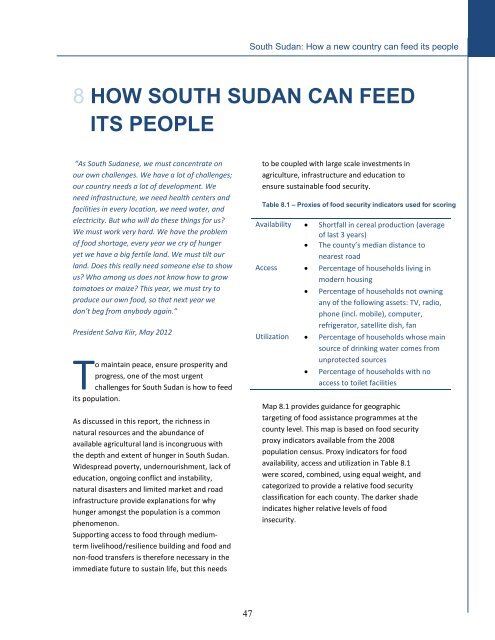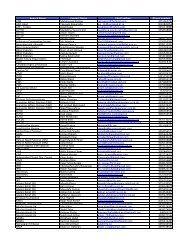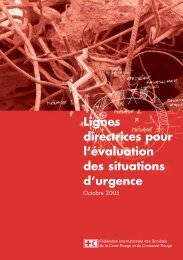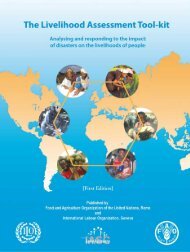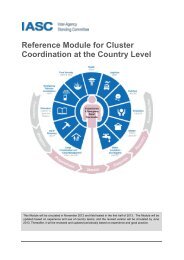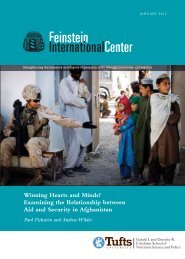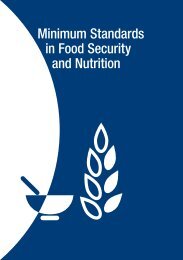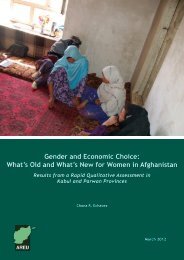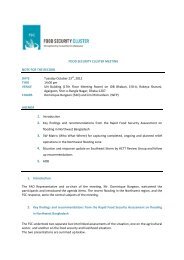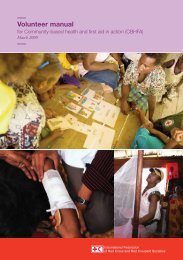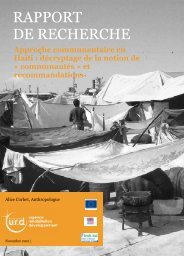4.15 MB - Food Security Clusters
4.15 MB - Food Security Clusters
4.15 MB - Food Security Clusters
- No tags were found...
You also want an ePaper? Increase the reach of your titles
YUMPU automatically turns print PDFs into web optimized ePapers that Google loves.
South Sudan: How a new country can feed its peopleHow South Sudan can feed its people8 HOW SOUTH SUDAN CAN FEEDITS PEOPLE“As South Sudanese, we must concentrate onour own challenges. We have a lot of challenges;our country needs a lot of development. Weneed infrastructure, we need health centers andfacilities in every location, we need water, andelectricity. But who will do these things for us?We must work very hard. We have the problemof food shortage, every year we cry of hungeryet we have a big fertile land. We must tilt ourland. Does this really need someone else to showus? Who among us does not know how to growtomatoes or maize? This year, we must try toproduce our own food, so that next year wedon’t beg from anybody again.”President Salva Kiir, May 2012To maintain peace, ensure prosperity andprogress, one of the most urgentchallenges for South Sudan is how to feedits population.As discussed in this report, the richness innatural resources and the abundance ofavailable agricultural land is incongruous withthe depth and extent of hunger in South Sudan.Widespread poverty, undernourishment, lack ofeducation, ongoing conflict and instability,natural disasters and limited market and roadinfrastructure provide explanations for whyhunger amongst the population is a commonphenomenon.Supporting access to food through mediumtermlivelihood/resilience building and food andnon-food transfers is therefore necessary in theimmediate future to sustain life, but this needsto be coupled with large scale investments inagriculture, infrastructure and education toensure sustainable food security.Table 8.1 – Proxies of food security indicators used for scoringAvailability Shortfall in cereal production (averageof last 3 years) The county’s median distance tonearest roadAccess Percentage of households living inmodern housing Percentage of households not owningany of the following assets: TV, radio,phone (incl. mobile), computer,refrigerator, satellite dish, fanUtilization Percentage of households whose mainsource of drinking water comes fromunprotected sourcesPercentage of households with noaccess to toilet facilitiesMap 8.1 provides guidance for geographictargeting of food assistance programmes at thecounty level. This map is based on food securityproxy indicators available from the 2008population census. Proxy indicators for foodavailability, access and utilization in Table 8.1were scored, combined, using equal weight, andcategorized to provide a relative food securityclassification for each county. The darker shadeindicates higher relative levels of foodinsecurity.47


